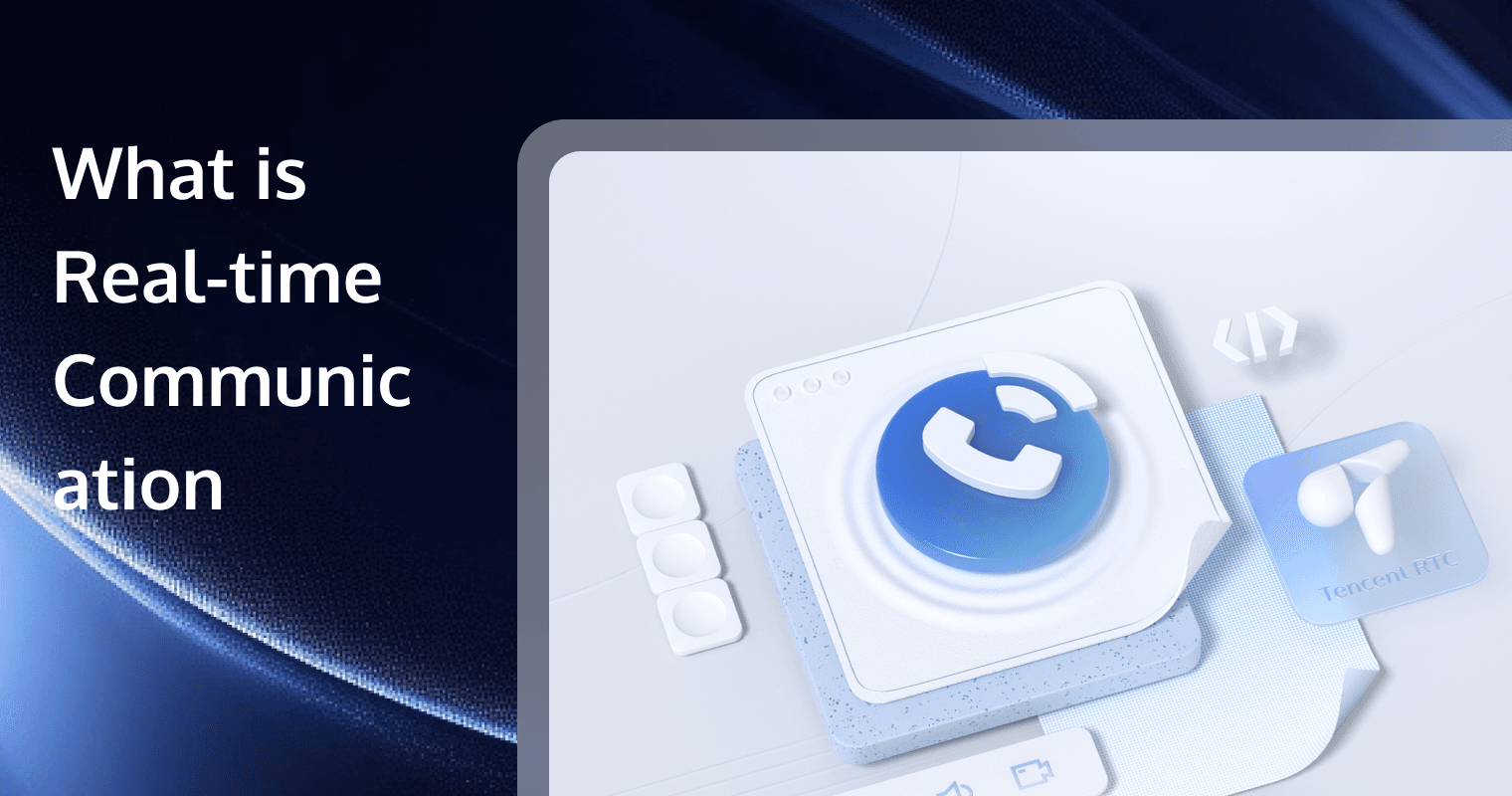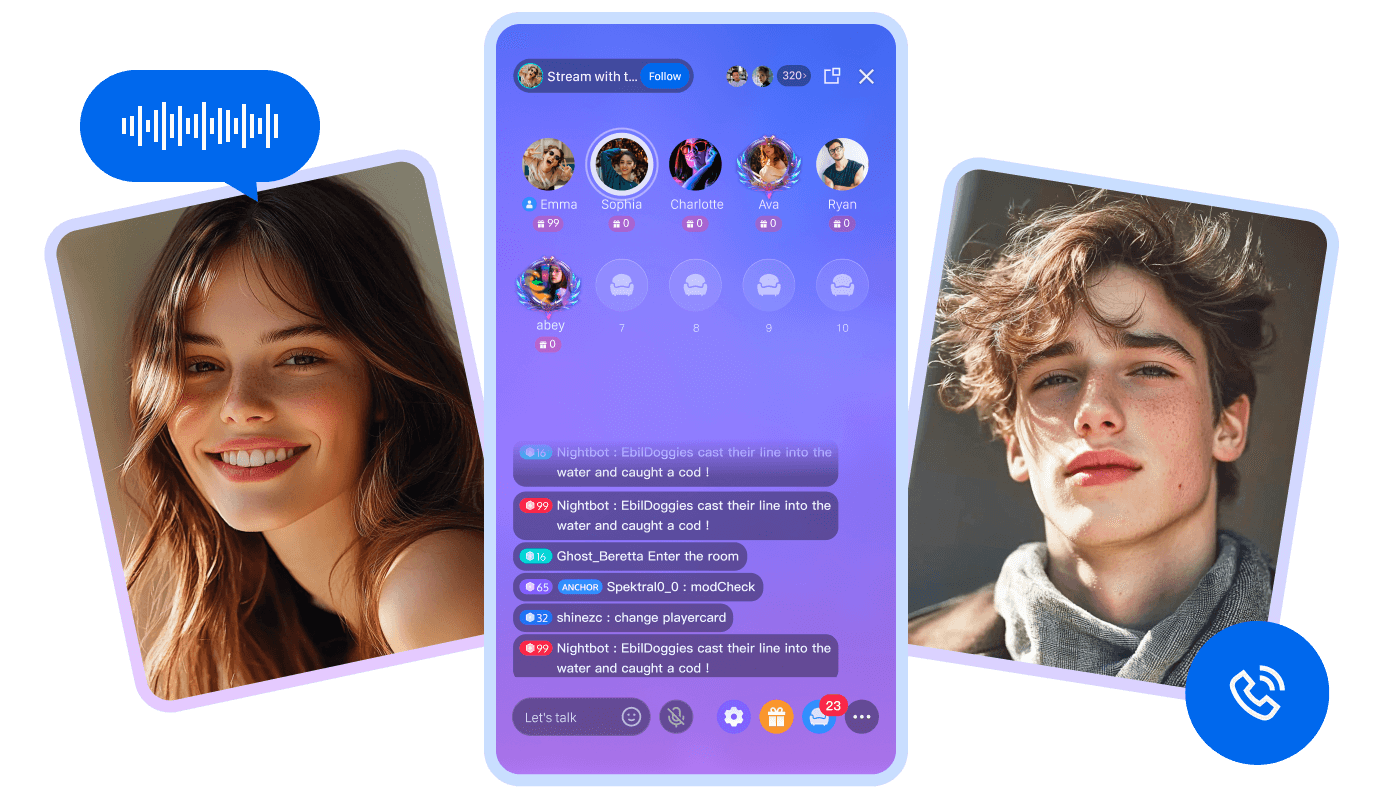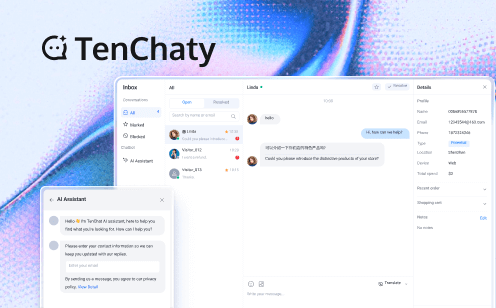
Real-time communication (RTC) has revolutionized how we connect, collaborate, and conduct business in the digital age. From video calls with family to large-scale corporate meetings, RTC technology powers the instant interactions that have become essential to modern life. But what exactly is real-time communication, and how does it work behind the scenes?
Understanding Real-Time Communication
Real-time communication refers to the immediate exchange of information between two or more parties with minimal delay. Unlike traditional communication methods like email or text messages, RTC enables instantaneous interaction where participants can see, hear, and respond to each other as if they were in the same room.
The key characteristic of real-time communication is its low latency – typically measured in milliseconds rather than seconds or minutes. This near-instantaneous exchange creates a natural, fluid conversation experience that mirrors face-to-face interactions.
Types of Real-Time Communication
Voice Communication
Voice calling remains one of the most fundamental forms of RTC. Modern voice communication has evolved far beyond traditional phone calls to include:
- VoIP (Voice over Internet Protocol) calls
- Conference calling with multiple participants
- High-definition audio with noise cancellation
- Integration with other communication tools
Video Communication
Video calling adds the visual dimension to real-time interactions, enabling:
- One-on-one video conversations
- Group video conferences
- Screen sharing and presentation capabilities
- Virtual backgrounds and filters
- Multi-camera setups for professional broadcasts
Text-Based Real-Time Communication
Instant messaging and chat applications provide text-based RTC through:
- Direct messaging between individuals
- Group chats and channels
- Real-time typing indicators
- File and media sharing
- Integration with voice and video features
Screen Sharing and Collaboration
Modern RTC platforms enable real-time collaboration through:
- Screen sharing for presentations and demonstrations
- Collaborative whiteboards and drawing tools
- Document co-editing in real-time
- Remote desktop access and control

The Technology Behind Real-Time Communication
WebRTC: The Foundation of Modern RTC
Web Real-Time Communication (WebRTC) is an open-source project that enables real-time communication directly in web browsers without requiring plugins or additional software. WebRTC handles:
- Audio and video capture from devices
- Encoding and decoding of media streams
- Network transmission and reception
- Security and encryption protocols
Protocols and Standards
Several key protocols power real-time communication:
RTP (Real-time Transport Protocol): Delivers audio and video data over networks with timing information to ensure proper playback.
RTCP (RTP Control Protocol): Provides feedback on transmission quality and helps optimize media delivery.
SIP (Session Initiation Protocol): Establishes, manages, and terminates communication sessions.
STUN/TURN Servers: Help establish connections between devices behind firewalls and NATs.
Codecs and Compression
To efficiently transmit audio and video data, RTC systems use codecs that compress and decompress media:
- Audio Codecs: Opus, G.711, G.722, AAC
- Video Codecs: H.264, H.265/HEVC, VP8, VP9, AV1
Key Benefits of Real-Time Communication
Enhanced Collaboration
RTC breaks down geographical barriers, enabling teams to collaborate effectively regardless of location. This leads to:
- Faster decision-making processes
- Improved project coordination
- Better team cohesion and relationships
- Reduced travel costs and time
Improved Customer Experience
Businesses leverage RTC to provide superior customer service through:
- Instant support via chat or video calls
- Visual problem-solving capabilities
- Personalized interactions
- Reduced resolution times
Flexibility and Accessibility
Modern RTC solutions offer:
- Cross-platform compatibility
- Mobile and desktop accessibility
- Integration with existing business tools
- Scalability for organizations of all sizes
Challenges in Real-Time Communication
Network Latency and Quality
The biggest challenge in RTC is maintaining low latency while ensuring high-quality audio and video. Factors affecting performance include:
- Internet connection speed and stability
- Network congestion
- Distance between participants
- Server infrastructure quality
Security and Privacy Concerns
Real-time communication requires robust security measures to protect:
- Personal and sensitive information
- Business communications
- User privacy and data
- Compliance with regulations like GDPR
Technical Complexity
Implementing RTC solutions involves complex considerations:
- Cross-platform compatibility
- Device and browser support
- Scalability requirements
- Integration with existing systems
Applications Across Industries
Education
RTC has transformed education through:
- Virtual classrooms and remote learning
- Interactive online courses
- Student-teacher collaboration
- Educational content streaming
Healthcare
Telemedicine and remote healthcare rely on RTC for:
- Doctor-patient consultations
- Medical training and education
- Emergency response coordination
- Mental health support services
Business and Enterprise
Organizations use RTC for:
- Remote team meetings and collaboration
- Client presentations and demos
- Training and onboarding programs
- Customer support and sales
Entertainment and Social Media
Consumer applications include:
- Social video calling
- Live streaming and broadcasting
- Interactive gaming
- Content creation and sharing
Future Trends in Real-Time Communication
Artificial Intelligence Integration
AI is enhancing RTC through:
- Real-time language translation
- Automated transcription and note-taking
- Intelligent noise reduction
- Predictive quality optimization
5G and Edge Computing
Next-generation networks will enable:
- Ultra-low latency communication
- Enhanced mobile RTC experiences
- Improved reliability and coverage
- New use cases in IoT and autonomous systems
Extended Reality (XR)
The convergence of RTC with AR/VR technologies creates:
- Immersive virtual meetings
- Spatial audio and video experiences
- Collaborative virtual workspaces
- Enhanced remote presence
Choosing the Right Real-Time Communication Solution
When selecting an RTC platform, consider:
- Reliability and Performance: Consistent, high-quality connections
- Scalability: Ability to grow with your needs
- Security: End-to-end encryption and compliance features
- Integration: Compatibility with existing tools and systems
- Support: Comprehensive documentation and customer service
Tencent RTC: Leading the Future of Real-Time Communication
As the demand for reliable, high-quality real-time communication continues to grow, Tencent RTC stands at the forefront of innovation. Our comprehensive platform delivers enterprise-grade RTC solutions that power millions of conversations worldwide.
Why Choose Tencent RTC?
Global Infrastructure: With data centers spanning multiple continents, we ensure low-latency connections regardless of user location.
Proven Reliability: Our platform maintains 99.9% uptime, backed by the robust infrastructure that powers billions of users across Tencent's ecosystem.
Advanced Features:
- High-definition video calling with up to 4K resolution
- Crystal-clear audio with AI-powered noise reduction
- Interactive live streaming for audiences of any size
- Real-time messaging with rich media support
Developer-Friendly: Our comprehensive SDKs and APIs make integration simple, with support for all major platforms and programming languages.
Flexible Pricing: From startups to enterprises, our pricing plans scale with your business needs.
Expert Support: Our dedicated technical team provides 24/7 support to ensure your RTC implementation succeeds.
Whether you're building a social app, enabling remote work, or creating the next generation of interactive experiences, Tencent RTC provides the foundation for reliable, scalable real-time communication.
Get started with Tencent RTC today and join thousands of developers who trust our platform to power their real-time communication needs.
Ready to integrate world-class real-time communication into your application? Contact our team to discuss your specific requirements and discover how Tencent RTC can accelerate your development timeline.


